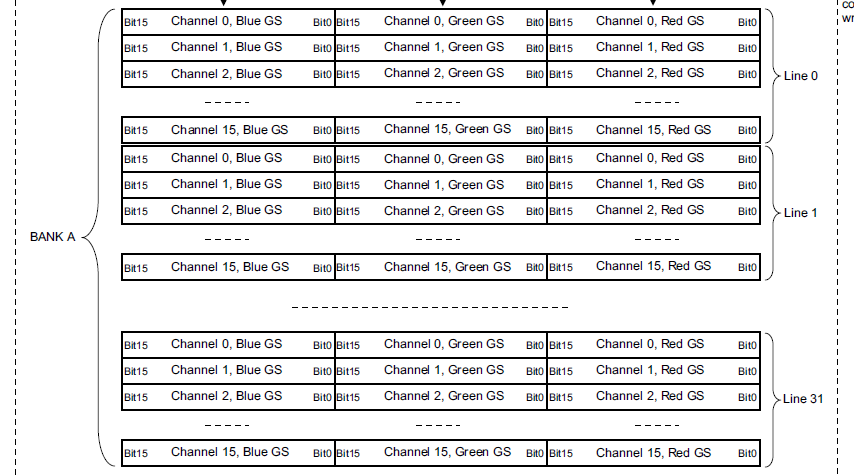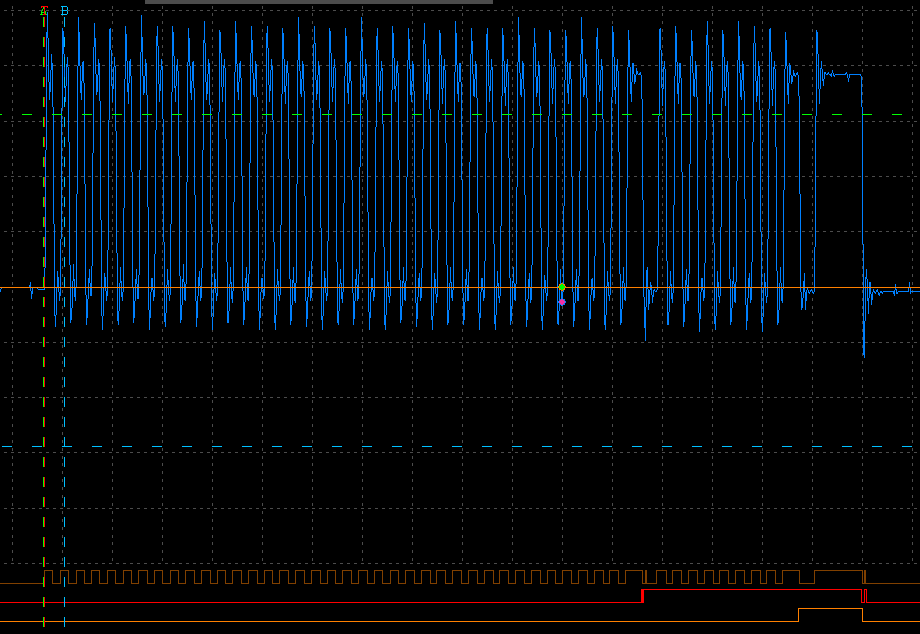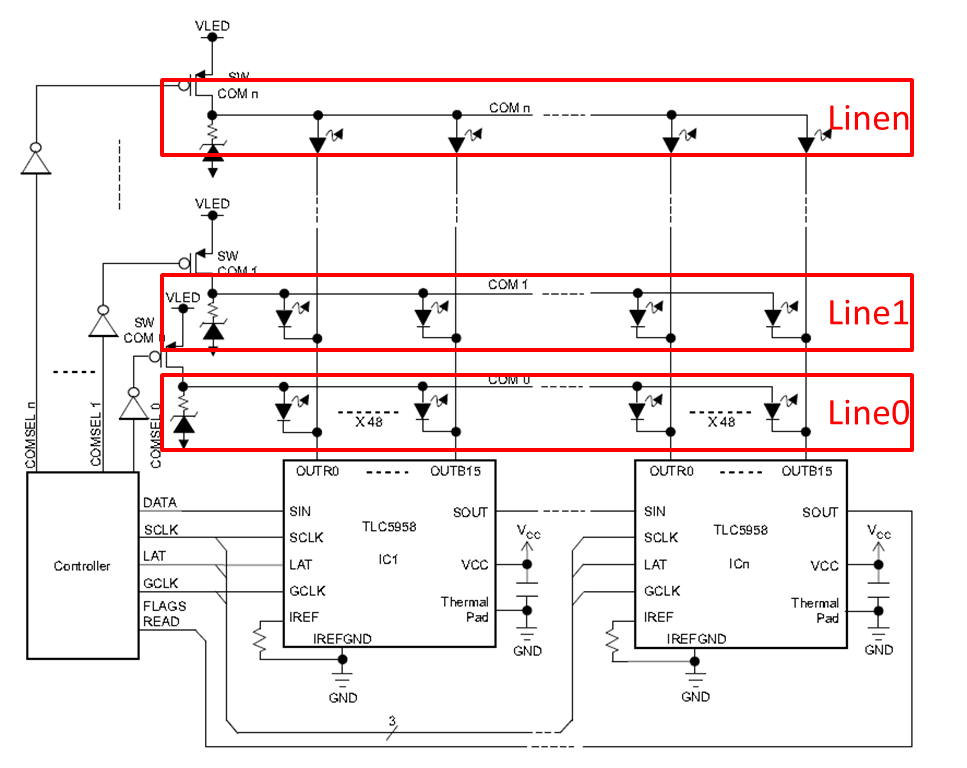Other Parts Discussed in Thread: TLC5957
I'm using 2 TLC5958 chips (multiplexed) to control 32 RGB LEDs (setting MAX_LINE to 00001b).
When I set values for channel 15 of first TLC5958, they also appear on channel 0 of second TLC5958. After that, continuing to write GS Data, sets channels 1 thru 15 of 2nd TLC.
All FC settings are at their defaults except for MAX_LINE changed from 0 to 1.
Any ideas what I am doing wrong?





